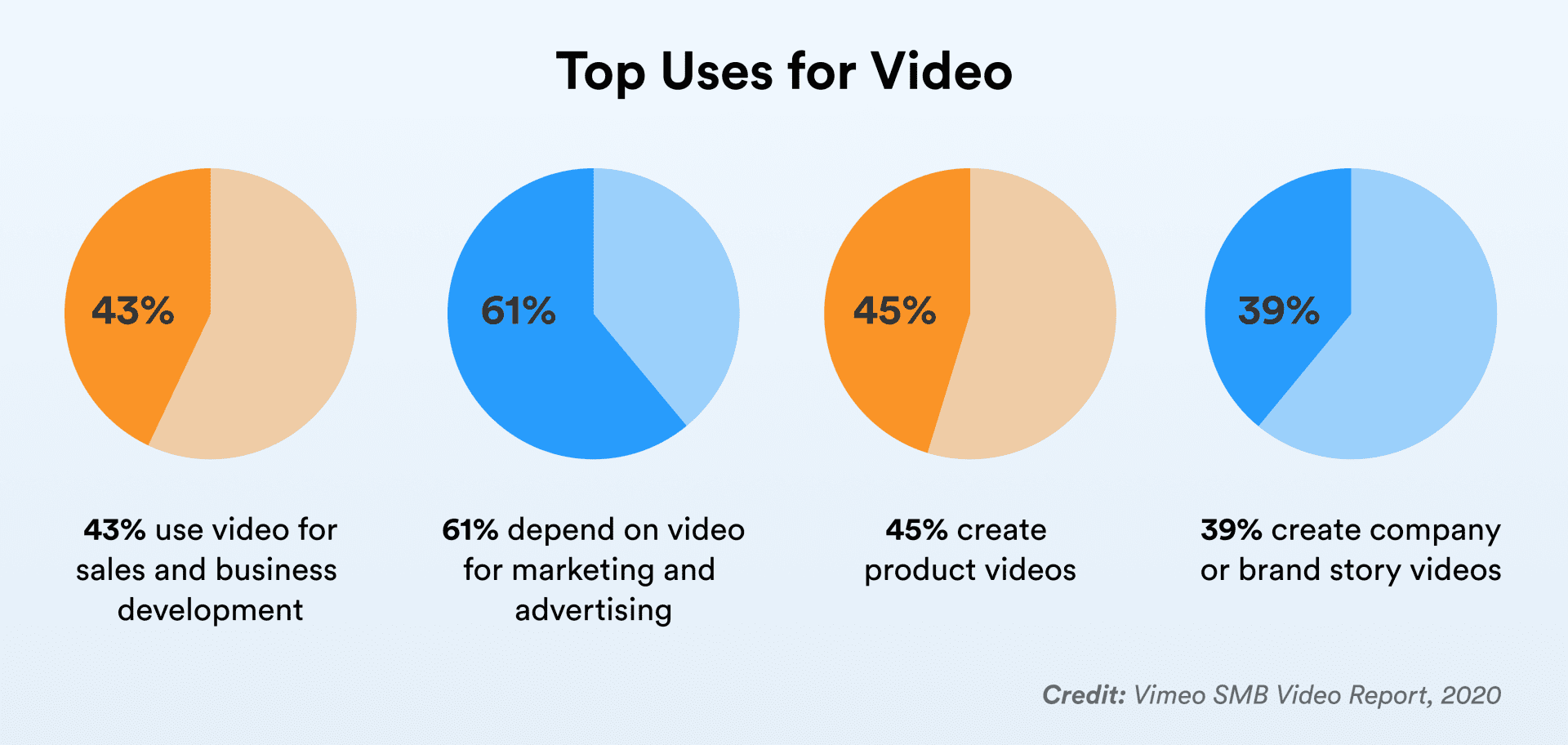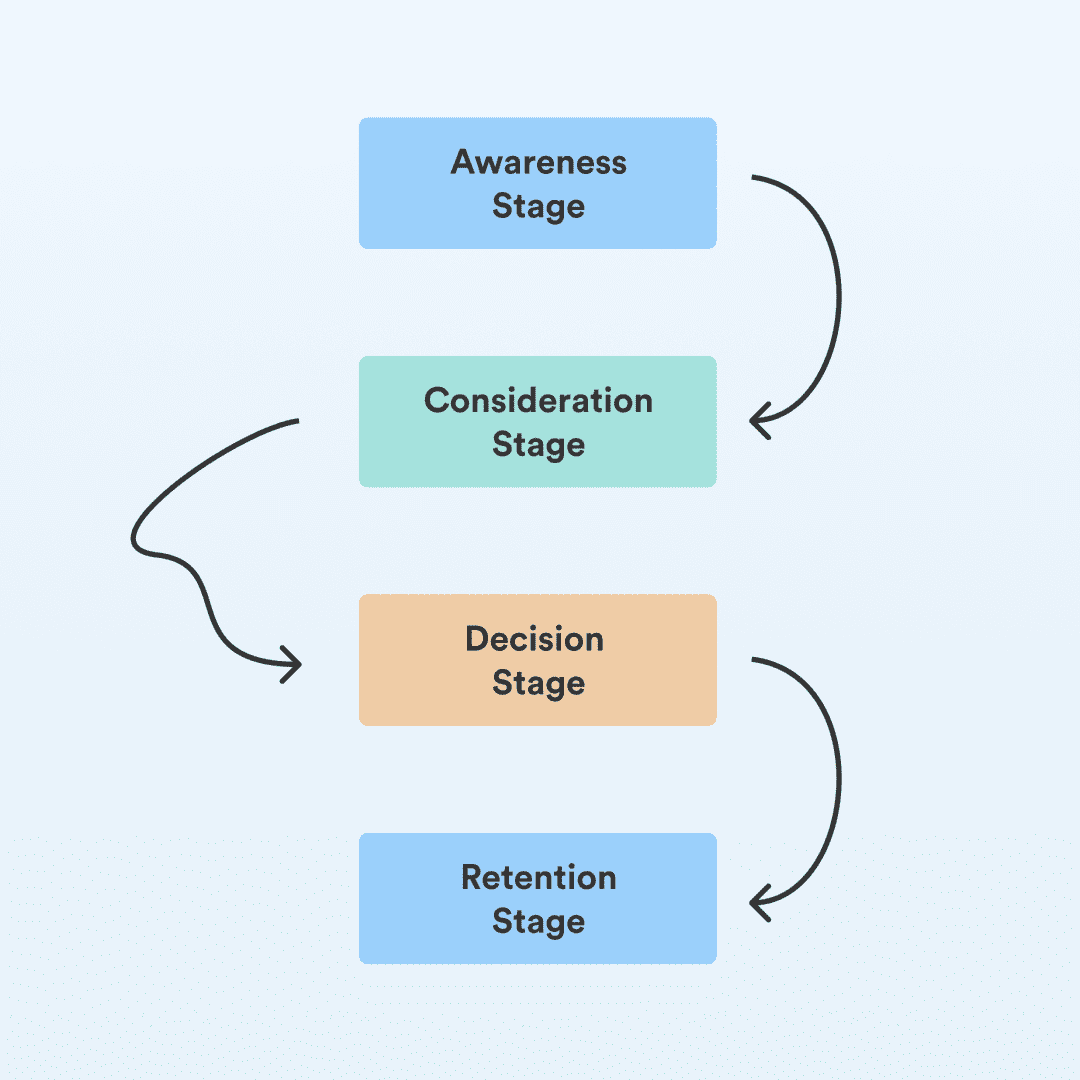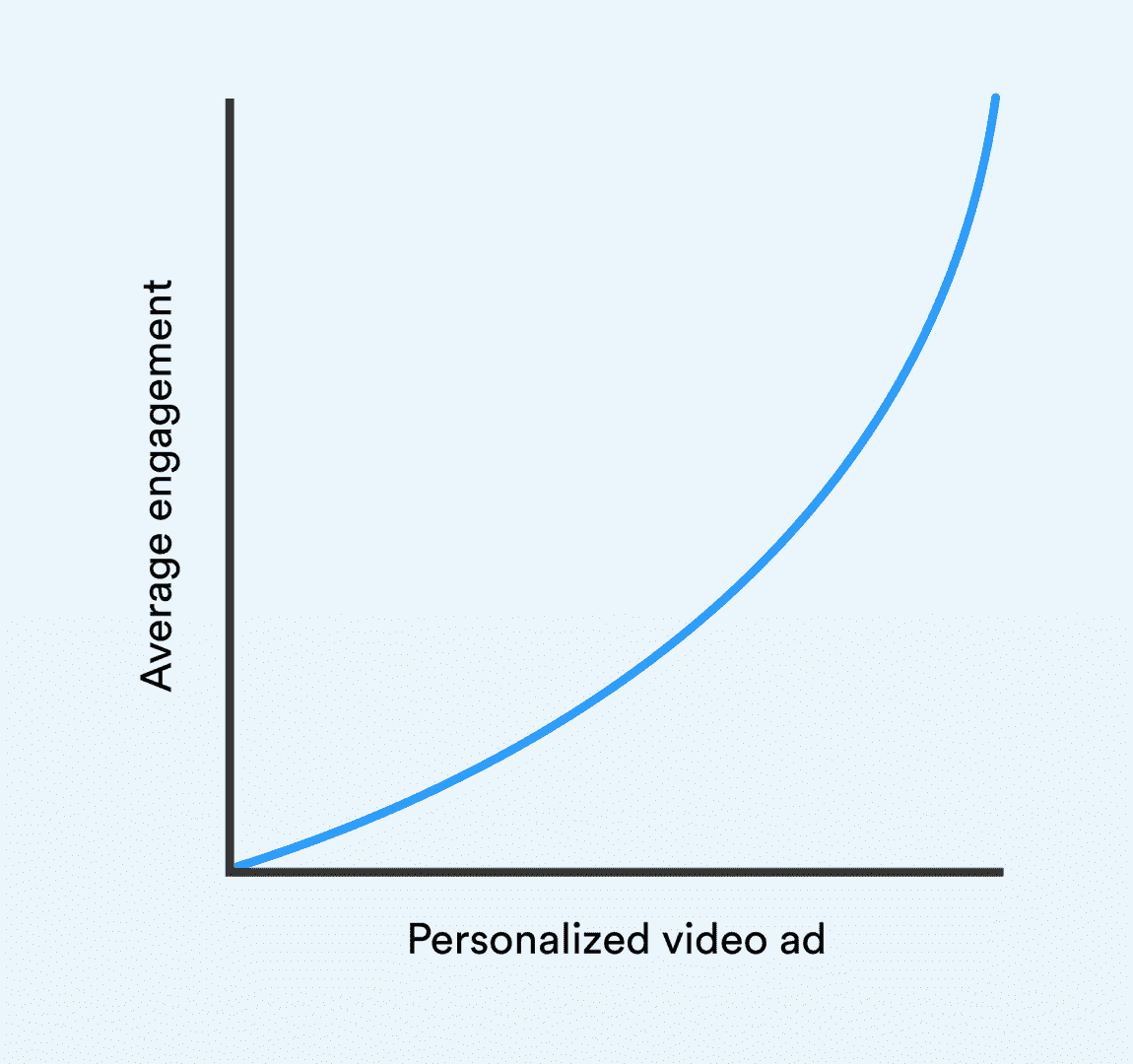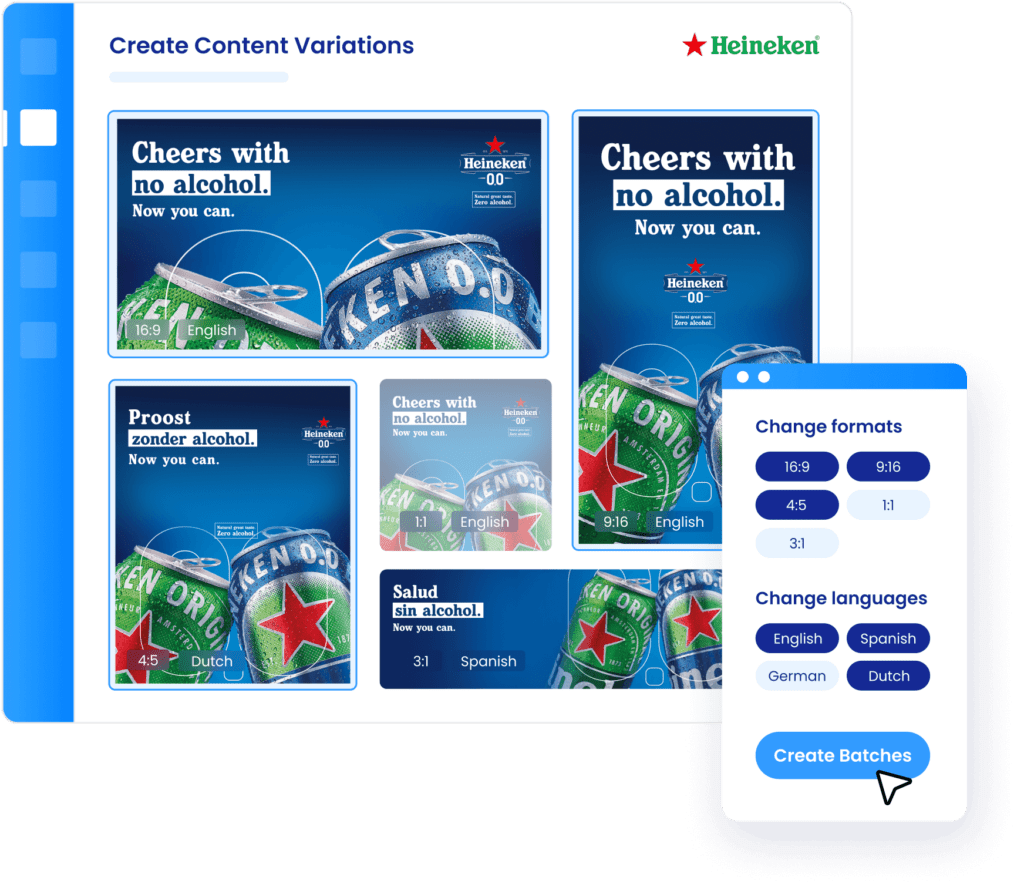This year, the odds are clear: brands aren’t going to stop running ad campaigns anytime soon. However, there’s still a key obstacle stopping them from achieving their full potential: creating ads that are irrelevant to their audience.
But that’s not entirely surprising. Today, 86% of consumers suffer from “banner blindness”, a phenomenon in web usability where visitors consciously or unconsciously ignore banner-like ads.
Here at Storyteq, however, we don’t think that the ads themselves are the issue. By targeting everyone, everywhere, you immediately know you’re up for inefficiencies and this is the kind of advertising that has a low success rate. The red flag? Running ads that entirely lack context.
The good news is that banner blindness can now be cured thanks to dynamic video ads.
In this article, we’ll walk you through how dynamic video ads help you reach your audience contextually and why the process of creating them doesn’t have to keep you permanently glued to your computer.
Read on to learn best practices and examples from key marketers that have already adopted this strategy and now bank on dynamic videos to create stellar campaigns that convert.
For an expert take, meet the marketers we sat down with:
- Danielle Antonis, Online Marketing Consultant at Merkle
- Rian Baas, Online Marketeer at Corendon
- Charit Anchan, Digital Marketing Manager at Amazon
- Chiara Grigolini, Global Digital Content Marketer at Affinity Petcare
- Bram Peters, CRM Marketeer, felyx
What is a dynamic video ad?
Dynamic video ads are ads that you tailor based on any data input. Dynamic video ads are made of interchangeable elements such as scenes, product images, overlay text, and CTAs to make the ad relevant to the viewer.
The great thing about dynamic video ads is that they allow you to target your ideal audience wherever they are, making the experience impactful and engaging.
💡 Platform tip
With the Storyteq platform, you can enjoy full flexibility of Creative Automation to create your own dynamic video ads in minutes. Start with your base creative, and fill out a data sheet with key information about your campaign to automatically add elements like overlays, CTAs, different languages, or product images to every ad.
Not only will these dynamic video ads present your audience with a more visual experience, but the personalization level will give them more context about your products or services and reach them where they are.
Here’s an example of what a dynamic video ad looks like:
Why should you use dynamic video ads?
Smart companies today are realizing there’s a better way to connect with people and have started to use video for everything, across the spectrum of sales, marketing and advertising. What’s more, they’re seeing a tangible return on investment.
As the old adage goes, video is no longer a nice option – it’s now a necessity. And if your team wants to increase conversion and exposure, a video marketing strategy is the only way to go.
And with ad blocking on the rise, there’s a clear sign that consumers want better ad experiences.
For marketers, this means adapting to their audience’s needs and being flexible.
According to Rian Baas, Online Marketeer at Corendon, the travel industry is a very dynamic and flexible industry where campaigns are often created in a very short period of time.
“It’s very important for us to be flexible in creating ads. We can change our preferred destination at every moment and Storyteq helps us be this flexible. We typically build a video template to create these additional videos on the spot,” mentions Rian.
“We started using Storyteq for creating dynamic video ads. We had different parameters that could change each day like price and preferred destination. We are now able to build different videos for every promotion.”
Rian Baas, Online Marketeer at Corendon
As consumers engage with brands across multiple devices and digital channels, they’re expecting a personalized, consistent, and compelling experience whenever and wherever they’re accessing your ad content, so it’s up to you as a marketer to create the type of video ad that will speak to them personally.
For instance, in a Vimeo research on how companies use video ads, the findings show that 61% of them depend on video for marketing and advertising purposes.

As more companies recognize the demand for videos, research shows it’ll dominate the channels where consumers are. It’s not hard to see why:
- 96% of companies creating video said if they distributed more video content, their business would (48%) or would possibly (48%) be more successful. (Vimeo, 2020)
- Video ad spending is expected to show an annual growth rate between 2020 and 2024 of 4.9%. (Statista, 2020)
- Consumers who view video are 1.81 times more likely to make a purchase than non-video viewers. (Adobe)
But while statistics show the penchant for video ads, there is still so much noise out there, and to put this into practice can be hard. In the next section, we’ll show you why creating dynamic videos shouldn’t be a complex process to take on.
What banner blindness is and how to combat it:
> Banner blindness is a phenomenon in web usability where visitors consciously or unconsciously ignore banner-like ads.
> By targeting everyone, everywhere, your ad has a low success rate. The red flag? Running ads that entirely lack context.
> Banner blindness can now be cured by using dynamic video ads.
> Dynamic video ads are made of interchangeable elements such as scenes, product images, overlay text, and CTAs to make the ad relevant to the viewer.
How to create a dynamic video ad in 3 steps
Successful advertising is all about context. With dynamic video ads, you can nail this context without spending a fortune on hundreds or thousands of variations, or using all your resources’ time to do the nitty-gritty work.
Simply set up your template, customize your creatives, and you’re ready to go.
“Storyteq makes it possible for us to create relevant and personalized ads with ease. This is important as consumers nowadays demand a personal and relevant brand experience.”
Danielle Antonis, Online Marketing Consultant at Merkle
For instance, Danielle shares how the process of creating dynamic ads works at Merkle.
🎞️ Step 1: Use the master template to create a video that is tailored to your campaign by changing the dynamic fields that you need.
🛠️ Step 2: Before pushing the video ad to the channels, download one example to check if everything is on point.
💯 Step 3: Create different ad variations and push them to the ad channels.
This is useful because instead of using different ads for different channels, Danielle’s team only gets to review them once to see if everything looks consistent across all the channels.
This is also where you can adjust the ads’ format to fit different channels such as a square video for social and a landscape video for YouTube.
The beauty of dynamic video goes beyond getting ads in front of your audience. It’s about leveraging your knowledge of your audience to create highly relevant experiences for them.
4 types of dynamic video ad campaigns you can run
A good rule of thumb for using dynamic video ads in your campaigns is starting with your audience in mind and understanding how they interact with your content and the unique creative adjustments that it entails.
Take Chiara Grigolini, Global Digital Content Marketer at Affinity Petcare, for instance: “If brands want to succeed, their ad creatives must be based on consumer insights,” she mentions.
By using technology and your team’s expertise, you can gather the best insights and turn them into a strategy.
“Valuable insights can come from the business itself, from consumer research (eg. NPS or web listening), from competitors, our own assets such as the brand website or the blog, and campaign results.”
Chiara Grigolini, Global Digital Content Marketer at Affinity Petcare
Only after you’ve mastered this aspect, you start planning your campaigns.
1. Serve relevant dynamic ads based on the marketing funnel

You wouldn’t climb a real mountain without a plan to reach the top—and your customer journey is no different. So before you begin, think about how dynamic video ads can support your overall marketing objectives.
With video ads, this means reaching your audience anywhere in the marketing funnel but most often, at the top and bottom of the marketing funnel, in the so-called awareness and consideration stages.
Just like the word “funnel” suggests, it’s based on the idea to focus on the relevant viewers and filter out the ones that aren’t ready to buy or engage with your brand.
One key feature of video ads is that they’re highly targeted and they always talk directly about a brand, product, or service.
How can you do this exactly using dynamic video ads?
- In the awareness stage: Use dynamic video ads to share your company’s visions, values, or story to spark interest.
- In the conversion stage: Showcase your value proposition and feature a strong call-to-action, such as “Use our discount code” or “Shop now”.
In a world of recurring revenue, more brands realize they need an engaged audience if they want their business to grow – and to do that, you have to win over your audience month after month.
For Charit Anchan, Digital Marketing Manager at Amazon, customers communicate through diverse digital marketing channels, especially now that people are leading an enhanced digital lifestyle.
“Marketers feel more driven to connect with their audience across all the channels they frequent the most,” shares Charit.
“Personalized marketing is all about offering improved user experience by serving relevant content, or targeting key messages in the funnel, based on your customer’s behavior.”
Charit Anchan, Digital Marketing Manager at Amazon
2. Reconnect with viewers through retargeting
For marketers, there may be no more daunting statistic than this: 96% of visitors that come to your website are not ready to buy.
That’s a huge portion of visitors you’re losing out on. Fortunately, there is one thing you can do to bring back lost visitors — run retargeting campaigns.
Retargeting allows you to show ads to people who have previously visited your website or app.
For example, with dynamic video ads, you can show relevant ads to each target group. And the way it works is you create all ads in the same style, yet, adjust each one of them to your specific audience to generate more engagement to your website.
“Marketers will focus a lot more on retargeting ads. And successful digital marketers must cultivate trust through a personalized and appropriate customer journey at every stage of the marketing funnel.”
Charit Anchan, Digital Marketing Manager at Amazon
3. Reach your audience where they are through geo-location
To reach your audience where they are, apply some logic to your campaign. Use every data source you can to inform your ads and create content that creates a relevancy factor.
With dynamic video ads, you put together relevant video elements that fit the viewer’s location. And with hyper-local awareness campaigns, you target consumers where they’re located.
For example, Danielle Antonis, Online Marketing Consultant at Merkle shares that her team uses dynamic video ads for their client, Mazda, to create dealer marketing campaigns.
“We show the target audience the nearest Mazda dealer in the video not only by displaying text but also by visually showcasing a picture of the showroom and a Google maps image,” explains Danielle.
For Danielle, the process of creating these video ads automatically makes it possible for a national campaign to have a local face.
“With the Storyteq platform, we create relevant and personalized ads with such ease and lowers production costs and time. Adding this relevancy for the audience drives results such as CTRs increase which leads to decreasing CPAs.”
Danielle Antonis, Online Marketing Consultant at Merkle
4. Experiment to find the best results through A/B testing
A/B testing or split testing allows you to choose multiple elements of your ads, such as the image or headline, to test them and see which one gives you a better result.
An easy way to think of this process is like an experiment that you might see in a lab using the scientific method.
Just like a scientist who experiments with different solutions, you may find that your predictions about performance are often wrong. The only true way to know if your assumptions are true is to test them and see the results yourself.
“Regular testing is one of the surest ways you can use to make real improvements to your ads. The more data you collect, the more patterns you’ll start to spot, and the better you’ll be able to adjust your ad strategy.”
Charit Anchan, Digital Marketing Manager at Amazon
These tests allow you to learn the subtleties of your campaign on a granular level — even the smallest tweak can make a huge impact on conversion rates, visits, sign-ups, or other key metrics.
How does this apply to digital advertising? Chiara points out that when you test TV campaign creatives with qualitative consumer research before launch, you might get amazing results on an ad that, once launched, doesn’t convert after all.
“However, if you launch an A/B test, you are 100% sure if the creatives convert or not,” she explains.
For Chiara, A/B testing for ad creatives was a great asset during the first COVID-19 lockdown. “There was a totally new world out there, and we didn’t know how to communicate in a way that was relevant for the consumer, in line with the brand, and appropriate for the situation,” she points out.
“After analyzing how the performance of our ads had changed, and how the business and the consumer were transforming, we ended up with an ad-hoc testing plan,” Chiara explains.
Her team then tested different variables, such as brand key messages or types of products based on the business insights they collected.
“After a few weeks, we were able to define the best creative strategy to adopt for our ads during this period. Needless to say that we kept on testing to fine-tune the ads and see if the learnings we got were still valid.”
Chiara Grigolini, Global Digital Content Marketer at Affinity Petcare
While the value comes from having different dynamic video variations at your fingertips to push them to your channels, there are also many options to gather data for creatives.
Chiara recommends these tools:
- A business insight tool to identify top-sellers products in your ads
- A web listening tool like Brandwatch to listen to users’ opinion on your product
- Competitor analysis tool like Appannie or SemRush to get inspired by competitors’ creatives and scout new trends
- Google Analytics or Search Console to scout the most read articles of your blog and develop social media content
4 types of dynamic video ad campaigns
1. Based on Marketing Funnel: Think about how your dynamic ads can serve your customer’s journey and your overall marketing objectives.
2. Through retargeting: Create relevant ads for each retargeted group.
3. Through geolocation: With dynamic video ads, you put together relevant video elements that fit the viewer’s location. And with hyper-local awareness campaigns, you target consumers where they’re located.
4. Through A/B testing: With A/B testing you can test multiple elements of your ads, such as the image or headline, and choose the one that gives you the best result.
Creating dynamic video ads that convert
As people watch more videos across all channels, you now have more opportunities to use dynamic video to connect with them where they are spending their time: both on mobile and in their feed.
But, after all, video is just the vehicle—your ad strategy should be the engine that drives your message. To make an effective dynamic video, you’ll also need a great marketing strategy behind it.
For Danielle from Merkle, it’s crucial to create relevant and personalized campaigns that you can scale to the video format.
For example, when Danielle started experimenting with Facebook, her team saw some good results with dynamic campaigns for link posts and canvas ads where the CTR had significant increase.
As Danielle puts it: “Because video is becoming a more popular ad format to use for Facebook, we wanted to implement this success to dynamic videos as well. Later on, we scaled this success to other platforms such as YouTube and display. Through this step-by-step approach, we rolled out more dynamic video ads in our campaigns for clients.”
Ensure your dynamic video is suitable for the online environment
Just like a good movie, a quality dynamic video ad also grabs and sustains your viewer’s interest from the very first seconds.
When running dynamic video ad campaigns across channels, keep in mind the effective creative characteristics for each channel.
When developing content for mobile feed, consider creative characteristics—like visual cues and brand links—and how they work together to effectively deliver messages.
Danielle shares a framework her team taps into to ensure ads match the online channels:
- Make sure the video is available in impactful formats and not only landscape
- The length of the video online is advised to be 10-15 seconds
- Subtitles are recommended when the sound is turned off
- Use sound when people choose to watch the ad with the sound on to capture the full video experience
- Show your brand in the first seconds or throughout the video for better brand recall
- Flip the script where you attract your audience’s attention in the first seconds of the video
- Place your most important message at the beginning of the video as not everybody watches it till the end
- Use a CTA and adjust your video for the channel where you’re distributing it
Create dynamic videos that tell stories
With so many ads floating past unnoticed, what does it take to create something that really sticks in our minds?
Gone are the days of generic video ads with a questionable design that takes more minutes than your audience can handle.
Today, marketers know that only a few seconds of the right visuals, story, and messaging can be enough to spark interest and attract viewers.
In fact, think of your dynamic video’s design as a hook. Just like in storytelling gripping stories have a hero, in video advertising, you have an X factor that attracts people to watch more.
Use this to reel your audience towards your website where you can then offer them more content that helps them go in the right direction or give them a feel-good factor when you address them directly.
Or how Bram Peters, CRM Marketeer at felyx puts it: “Nowadays, it’s all about the customer experience and making them smile.”
At felyx, the team has created a video that shows the ride of the customers throughout the year 2020.
“By telling a personal story to every customer, we’ve encouraged them to share the video on social media and with friends via Whatsapp. A good example of virality if you would ask me.”
Bram Peters, CRM Marketeer at felyx
Individualize your ads
When you insert dynamic elements into video ads, viewers get the uncanny sensation that everything was crafted just for them.
When you personalize your video ads to mention your audience’s industry, they will be impressed and are more likely to engage.

But when they’re individualized, which means personalized to an individual level to include a first name or specific information about your audience, you immediately have people’s full attention.
Take Bram Peters, CRM Marketeer at felyx, for instance: “Your dynamic videos should be relevant to the person that is viewing them. Making it personal and based on customers’ behavior is crucial to get somebody’s attention,” explains Bram.
At felyx, Bram and his team created a personalized annual overview of their customers based on their rides during 2020.
“We showed the customer’s ride at felyx in a fast, easy, and fun way. This has resulted in a lot of positive reactions and shares on social media, creating a virality effect,” points out Bram.
“We will expand our felyx “Year in Review Campaign” this year as well and make it even bigger and broader. In addition, we will look into other relevant moments in the customer journey where we can use personalized video content to engage with customers and keep them active at felyx.”
Bram Peters, CRM Marketeer at felyx
Key takeaways
- Adapt your dynamic ads to each channel you use: As people watch more videos across all channels, you now have more opportunities to use dynamic video to connect with them where they are spending their time.
- Ensure that your dynamic video is suitable to the online environment: Just like a good movie, a quality dynamic video ad also grabs and sustains your viewer’s interest from the very first seconds.
- Create dynamic videos that tell a story: Think of your dynamic video as a hook. You should have an X factor that attracts people to watch more.
- Individualize your ads: Personalize your ads to an individual level to include a first name or specific information about your audience and immediately have people’s full attention.
If your goal is to reach your audience in a more strategic and personal way, dynamic videos can help you achieve that level of engagement while staying contextual and relevant.
These are just some examples of how you can get tactical with dynamic videos. The rest is up to your imagination. Ready to connect with your audience?





